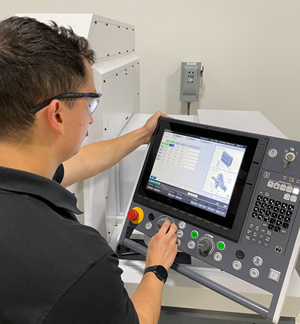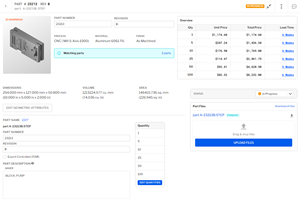Data-Driven Manufacturing Deconstructed
"Data-Driven Manufacturing" can be broken into three areas for better understanding: the conceptual, the technical and the practical.
Share





Like many of us, I am sometimes baffled by the barrage of new terminology linked to current developments in how computers and computer networks are being used in factories and machine shops. We’re using labels such as Industry 4.0, Industrial Internet of Things, digital manufacturing, smart factories and many other names. I’ve been favoring the term data-driven manufacturing to refer to this whole area simply because the words are familiar and easy to explain (“Data-driven manufacturing means better decisions about processes and procedures,” I like to say).
At one time (20-25 years ago or so), the term computer-integrated manufacturing (CIM) was in vogue. CIM went away, mostly because the computers and software available in those days were simply not up to the application. There was no internet; the personal computer was just appearing. Otherwise, CIM was a useful term because integration was understood to mean “connected for more effective interaction,” which is still our goal today.
Lately, however, I have found it useful to sort out pronouncements, product news and discussions about all this stuff along these lines: Is the focus on the conceptual, the technical or the practical? The graphic at the top of this page shows how this classification works. Each panel lists representative entries, in no particular order.
Under conceptual, I group the big-picture, theoretical, futuristic words and phrases. When people talk or write about Industry 4.0, for example, I try to discern the vision underlying the comments. In other words, what will manufacturing look like, according to this source? What do they “see?” I call this the WHAT category.
Under technical, I group the interoperability standards, innovations in computer hardware and sensors, programming codes and new software technology that are necessary to make the conceptual come about. This is the HOW category. These developments explain how Industry 4.0 can be achieved. Personally, I find this category the most challenging, partly because it is filled with unfamiliar jargon and acronyms, and partly because it brings up nitty-gritty issues on highly specialized levels. Although it may not be necessary to understand the details or fine points of developments in this category, it is certainly helpful to be aware of the significance of them.
Under practical, I group the main applications or benefits promised by the work in the conceptual and technical fields. This is the WHY category. These are the compelling reasons for moving ahead with bold implementations of data-driven manufacturing. These are the rewards for heeding the visionaries and supporting the technicians. These are the justifications for embracing the changes and disruptions imposed by the WHAT and the HOW. We should keep these benefits and breakthroughs in mind, because they give us the energy and urgency to sustain progress.
I could have added one more category—the WHO. This would be a list of the national and international programs, federal agencies, standards-making organizations and trade associations that are shaping the vision, creating the building blocks and offering end products by which the manufacturing industry will advance. Instead, let me end here by simply suggesting that the most important entry in this category is the ultimate agent of change: YOU.
Related Content
Swiss-Type Control Uses CNC Data to Improve Efficiency
Advanced controls for Swiss-type CNC lathes uses machine data to prevent tool collisions, saving setup time and scrap costs.
Read MoreGive Job Shop Digitalization a Customer Focus
Implementing the integrated digital technologies and automation that enhance the customer's experience should be a priority for job shops and contract manufacturers.
Read MoreProcess Control — Leveraging Machine Shop Connectivity in Real Time
Renishaw Central, the company’s new end-to-end process control software, offers a new methodology for producing families of parts through actionable data.
Read MoreBlueprints to Chips: CAD/CAM Tips and Tricks
This collection of articles delves into the latest CAD/CAM innovations, from AI-driven automation and optimized tool paths to the impact of digital twins and system requirements.
Read MoreRead Next
AMRs Are Moving Into Manufacturing: 4 Considerations for Implementation
AMRs can provide a flexible, easy-to-use automation platform so long as manufacturers choose a suitable task and prepare their facilities.
Read MoreMachine Shop MBA
Making Chips and 91ÊÓƵÍøÕ¾ÎÛ are teaming up for a new podcast series called Machine Shop MBA—designed to help manufacturers measure their success against the industry’s best. Through the lens of the Top Shops benchmarking program, the series explores the KPIs that set high-performing shops apart, from machine utilization and first-pass yield to employee engagement and revenue per employee.
Read MoreLast Chance! 2025 Top Shops Benchmarking Survey Still Open Through April 30
Don’t miss out! 91ÊÓƵÍøÕ¾ÎÛ's Top Shops Benchmarking Survey is still open — but not for long. This is your last chance to a receive free, customized benchmarking report that includes actionable feedback across several shopfloor and business metrics.
Read More






















